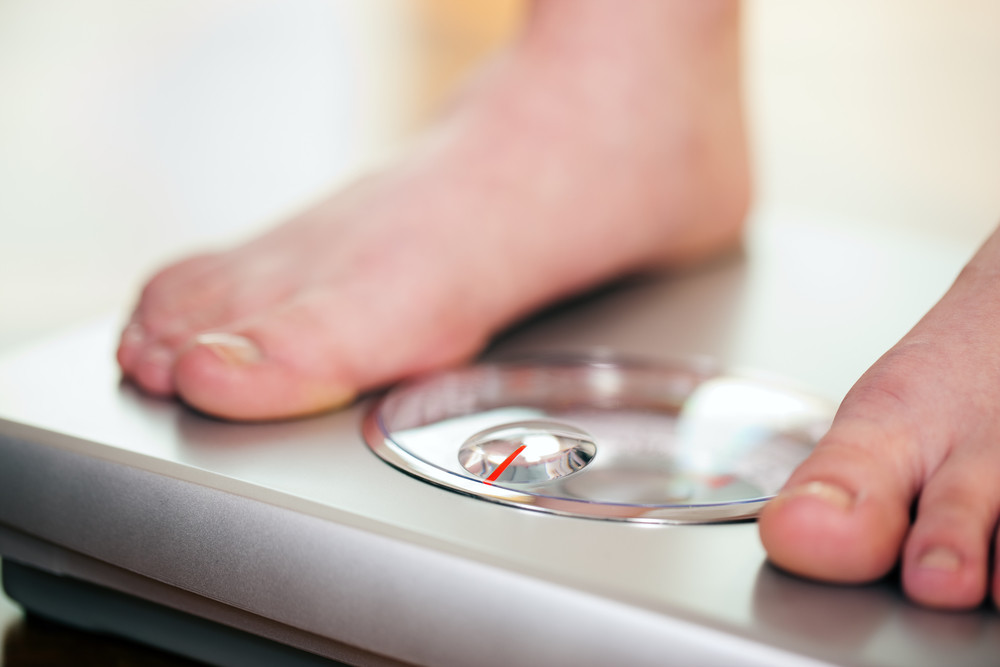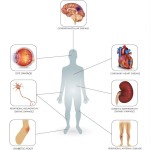- Home
- Dr Sultan Linjawi
Type 1 Diabetes
Type 2 Diabetes
Prediabetes
Gestational Diabetes
- Diabetes Information
- Testimonials
What can I do to prevent prediabetes? Can I prevent prediabetes from becoming type 2 diabetes?
You may have just found out that you have prediabetes or at risk of developing prediabetes. This may be more difficult than you anticipated. However, if you don’t have prediabetes or type 2 diabetes yet, this is actually really good news! It means that you can make changes now to prevent or delay developing diabetes. Making some simple changes now, can have a huge impact on your health for the years ahead.
So, yes! You can prevent prediabetes. Phew!
Why do some people develop diabetes?
Prediabetes and type 2 diabetes is a journey. There are some people who are more likely to develop diabetes compared to others. People who are overweight or obese are more likely to develop diabetes, so to prevent type 2 diabetes you either want to stay a healthy weight or else you want to lose weight. The longer you are overweight the more likely you are to develop insulin resistance and the longer you have insulin resistance the more likely you are to develop pancreatic dysfunction, leading to type 2 diabetes.
Aside from weight, there are several factors that can increase your risk of developing prediabetes. They are referred to as being either modifiable risk factors or non-modifiable risk factors.
PreDiabetes Content |
|---|
| PreDiabetes Program |
| Overview |
| Risk Factors |
| Symptoms |
| Diagnosis |
| Complications |
| Treatment |
| Diet |
| Monitoring |
| Tools |
| Mental Health |
| Prevention |
Non-modifiable risk factors
Non-modifiable risk factors are risk factors that can’t be changed. These include:
- Family history
- Genetics
- Age
- Gender
Being aware of the non-modifiable risk factors is extremely important. For people who have a family history of type 2 diabetes, you need to be more alert and start taking action early to prevent or delay developing prediabetes and type 2 diabetes.
Modifiable risk factors
Modifiable risk factors can be modified or changed in some way. For example, if you are someone who doesn’t exercise, then you may begin to exercise 2-3 times per week. This means you have modified your behaviour and lifestyle!
Modifiable risk factors include:
- Being overweight or obese, particularly extra weight around the waist – i.e. waist circumference more than 94cm (37in) for men and more than 80cm (31in) for women
- Having high blood pressure
- Having high cholesterol and high triglycerides
- Being physically inactive
- Eating a poor diet (one that is high in fat, salt, and sugar)
The Diabetes Prevention Program (DPP)
The Diabetes Prevention Program (DPP) and ongoing DPP Outcomes Study (DPPOS) are major studies looking into type 2 diabetes prevention. The DPP has been able to demonstrate that people who are at a high risk of developing type 2 diabetes, are able to prevent or delay the onset of diabetes by losing weight through lifestyle changes (increase in physical activity and changes to diet).
In the DPP, there were three different study groups:
- Lifestyle Change Group: Participants joined the DPP Lifestyle Change Program which provided intensive training. Participants tried to lose 7% of their body weight and maintain the weight loss through consuming fewer calories/ kilojoules and less fat, and exercising 150 minutes per week.
- Metformin Group: Participants look 850mg of metformin twice per day. They were provided with standard advice about diet and physical activity.
- Placebo Group: Participants were given a placebo twice per day, instead of metformin, and were provided with standard advice about diet and physical activity.
During the follow up from the DPPOS, it was found that participants who took part in the DPP Lifestyle Change Program or were taking metformin, were able to continue to prevent or delay developing type 2 diabetes, for at least 15 years after the study was completed (Long-term Effects of Lifestyle Intervention or Metformin on Diabetes Development and Microvascular Complications: the DPP Outcomes Study). This study also helps demonstrate the benefits of metformin.
What can I do to prevent prediabetes?
There are changes you can make to improve your health and reduce your risk of developing prediabetes. These include:
- Eating well
- Moving your body more
- Being a healthy weight
- Setting realistic goals
- Getting support
- Make changes part of your everyday
There is also some evidence that suggests quitting smoking can help to reduce your risk of developing diabetes. While there still needs to be more research done in this by scientists, there are plenty of other great reasons to quit smoking. For example, quitting smoking can help to lower your risk of having a stroke or heart attack.
Making these changes can also help to reduce your risk of developing diabetes comorbidities; hypertension and dyslipidaemia.
Eating well
If you want to prevent your chance of developing prediabetes, there are a few changes that you can make when it comes to your diet.
Reducing your intake of discretionary items and processed foods
Discretionary items are often referred to as ‘sometimes foods’ or ‘junk food’! Cakes, biscuits, lollies, and other sweet foods are well known as being ‘sometimes foods.’ Did you know that processed foods, including bacon, meat pies, and deli meat are also considered discretionary items? These types of foods are typically high in sugar, fat, and salt. These foods, especially the ones that are high in sugar, can impact on both your blood glucose levels and your weight.
These foods can also contribute to hypertension and dyslipidaemia, which are comorbidities of type 2 diabetes. Hypertension is commonly known as high blood pressure. When hypertension is left untreated, it can place extra strain on the heart and the arteries, which can eventually cause organ damage. If you have hypertension, it can increase your risk of heart failure, heart attack, stroke, and kidney failure. Reducing your intake of high salt foods is one treatment method for hypertension.
Dyslipidaemia refers to an abnormal mount of lipids (fats) in the blood. This includes triglycerides and cholesterol. Elevated blood fats can increase your risk of developing cardiovascular disease, including diseases of the blood vessels supplying the heart (coronary artery disease), brain (cerebrovascular disease), and limbs (peripheral artery disease). Discretionary foods are typically high in saturated fat, and excessive consumption of these foods also increases your risk of developing dyslipidaemia.
Choosing water as your primary beverage
 When it comes to hydration, having a glass of water is the best option. Here are two great things about water: it’s free from our taps and it’s free from energy. If you are someone who drinks a lot of juice or soft drink (including soda water), you might not realise how much extra energy you are consuming.
When it comes to hydration, having a glass of water is the best option. Here are two great things about water: it’s free from our taps and it’s free from energy. If you are someone who drinks a lot of juice or soft drink (including soda water), you might not realise how much extra energy you are consuming.
For example, a small glass or 125mL of fruit juice may equal 255kJ or 60 calories. But we have so many different sized cups and glasses at home, often opting for larger glasses. If you were to have a bigger glass of juice, for example a cup or 250mL, and you had 2 or 3 of these a day, you could be having an extra 1020kJ (242 calories) to 1530kJ (363 calories). And that’s on top of any meals or snacks you are having! It can all add up really quickly.
Reducing drinks like fruit juice or soft drinks from your diet, not only saves you money and assists in your weight loss, it may also decrease your blood glucose and insulin levels.
On the topic of fruit juice, here is a quick little video about fruit juice: Should I drink fruit juice?
Reduce your portion sizes
You probably realise that eating more food = more calories and energy. If you’re trying to lose weight, reducing your portion sizes can be so helpful!
You might think, “but I’ll go hungry if I reduce my portion sizes too much!” I promise you, you will not go hungry!! Yes, it can be hard to make some changes to your portion sizes, but here are some tips of what you can do:
- Serve less – when serving your meal, put slightly less food on your plate than you normally would
- Use a smaller a plate – if you’re eating off of a smaller plate, your meals will look like it fills up more of the plate, so you won’t feel as though you’re necessarily missing out
- Make less – when preparing your meals, make less so you are less likely to add more food to your plate, or else portion out the excess into reusable containers for easy lunch options for the week ahead
- Avoid distractions while eating – if you can, sit and enjoy a meal with your friends or family as eating in front of a TV causes us to eat more!
A couple of studies have even found the benefits of portion control in people with prediabetes. One study ( Body composition, dietary composition, and components of metabolic syndrome in overweight and obese adults after a 12-week trial on dietary treatments focused on portion control, energy density, or glycemic index) found that portion control as a weight loss method resulted in lower blood glucose and insulin levels in participants after a 12-week period. Another study of men with prediabetes (Improvement in diet habits, independent of physical activity helps to reduce incident diabetes among prediabetic Asian Indian men), found that in combination with other healthful behaviours, those who reduced their portion sizes lowered their risk of developing diabetes compared to men who made no lifestyle changes at all.
Including more fibre in your diet
As well as being good for your bowels, a diet high in fibre can be beneficial with weight management and decreasing the risk of diabetes. It is one of the easiest ways to improve your overall diet. Don’t forget the saying “an apple a day, keeps the doctor away!”
Fibre is a type of carbohydrate and can be divided into two categories: soluble and insoluble fibre. Soluble fibre is more important for diabetes management. Soluble fibre partially dissolves in water when it’s in the digestive tract, slowing the rate at which food is absorbed into the blood stream. This can cause blood glucose levels to rise more gradually and reduce the demand for insulin. Insoluble fibre does not dissolve in water and instead passes through the digestive tract. It’s important as it helps to provide bulk to our stools which can help to avoid constipation.
Examples of high fibre foods include:
- Soluble fibre: apples, oats, bran, prunes, and legumes
- Insoluble fibre: wholegrain breads, cereals, and pasta, cabbage, and carrots
A simple way you can incorporate fibre into your everyday, is by swapping white bread for whole meal bread and having a piece of fruit like an apple!
To learn more about carbohydrates, read about them in Carbohydrates and Diabetes.
Move your body more
Exercise doesn’t have to be going to the gym at 5am or doing crossfit seven days a week. Exercise means something different to everyone. The important thing is that we do something! Avoiding sedentary behaviours and moving more can help to prevent diabetes, hypertension, and dyslipidemia
When it comes to exercising, it is important for you to choose activities that you enjoy as it makes moving your body far more exciting. Maybe you have a bike in the shed that is gathering a bit of dust, but you miss the feel of the wind blowing through your hair. Maybe you miss swimming when it’s really hot. Or maybe you’ve always wanted to take up salsa dancing. Whatever it is, finding an activity you like that can fit into your daily routine, will mean that you’re more likely to stick with it for the long haul.
But if it has been a little while since you’ve last exercised, starting off with a morning or afternoon walk might be more suitable for you. Walking is a great way to slowly introduce exercise back into your life. You can start by walking around the block and increase the distance of your walk little by little every day.
Some other ways to move your body more, especially if you work an office job, can include going for a walk on your lunch break or even walking to the sink to fill up your water glass every hour. If you often have meetings with your co-workers, try to go on a walking meeting, even if it’s just around a block. It’s also a great way to get some fresh air and have time out from staring at your computer screen.
Ideally when we exercise, we should be aiming for at least 30 minutes or more of aerobic exercise on most days of the week. You could even break it up into three lots of 10 minutes and spread it across the day! Remember, if it’s been awhile since you were last active, start slowly and build gradually. Maybe you could even give Exercise Snacking a go!
Once you start to move your body more and become more used to exercising, it becomes easier and easier, and the benefits keep rolling in!! You will become fitter and lose more weight. With your increased fitness and less body weight to move, you will be able to exercise even more and push yourself to reach any new exercise goals you have.
Lose weight if you’re overweight or obese
 If you carry weight around your midsection, it can increase your risk of developing prediabetes and type 2 diabetes, especially if it’s visceral fat (Visceral Fat Mass Has Stronger Associations with Diabetes and Prediabetes than Other Anthropometric Obesity Indicators among Korean Adults, Dysfunctional Adiposity and the Risk of Prediabetes and Type 2 Diabetes in Obese Adults). Visceral fat is a type of body fat that’s stored around your internal organs, like your liver and intestines. Carrying excess visceral fat has been associated with an increased risk of developing other health conditions, not just type 2 diabetes! This includes heart disease, heart attacks, stroke, and bowel cancer.
If you carry weight around your midsection, it can increase your risk of developing prediabetes and type 2 diabetes, especially if it’s visceral fat (Visceral Fat Mass Has Stronger Associations with Diabetes and Prediabetes than Other Anthropometric Obesity Indicators among Korean Adults, Dysfunctional Adiposity and the Risk of Prediabetes and Type 2 Diabetes in Obese Adults). Visceral fat is a type of body fat that’s stored around your internal organs, like your liver and intestines. Carrying excess visceral fat has been associated with an increased risk of developing other health conditions, not just type 2 diabetes! This includes heart disease, heart attacks, stroke, and bowel cancer.
Making changes to your diet and increasing your physical activity can help you lose weight, including the nasty visceral fat. Losing even a small amount of weight can improve your health. The study Effect of Weight Loss With Lifestyle Intervention on Risk of Diabetes found that in people with prediabetes, for every kilogram lost there was a 16% reduction in risk of developing type 2 diabetes.
In the UK, there was a study, the Diabetes Remission Clinical Trial (DiRECT), that investigated the benefits of weight loss in people with type 2 diabetes, examining whether type 2 diabetes in remission would allow patients to stop taking anti-diabetic drugs. In DiRECT, remission was defined as long term Hb A1c levels of less than 6.5%, or 48mmol/mol, without needing to use any type 2 diabetes medications.
The DiRECT study investigated whether providing an intensive program for weight loss and weight loss maintenance, would be beneficial for people with type 2 diabetes. The latest findings of DiRECT has found that type 2 diabetes in remission, and staying in remission, is closely linked to weight loss, with 64% of participants who lost more than 10 kilos were still in remission after two years.
One thing to be mindful of is if you lose weight, it is important not to regain it. If you are obese or overweight and have lost weight, you may have noticed how your blood glucose levels and insulin levels have decreased. Well done! The problem is that if you regain some of or all of the weight you initially lost, your blood glucose and insulin levels can rise again, putting you back at risk of developing diabetes (Effects of weight regain following intentional weight loss on glucoregulatory function in overweight and obese adults with pre-diabetes).
DO YOU WANT TO GET YOUR DIABETES UNDER THE BEST CONTROL?
Click the program that best describes your situation.
Setting realistic goals

Setting goals is important. And setting realistic goals is even more important. Realistic goals are goals that you believe you are able to achieve. Don’t be too ambitious and set yourself goals that you won’t follow through with. For example, you may think “I’m going to quit eating cakes and sweet foods” cold turkey.
More often than not, these types of goals are automatically setting you up for failure. If you fail to keep your goal because you ate cake during an office birthday celebration, you might experience some serious self-loathing. Aside from feeling really crappy, you may end up giving up on all of your goals entirely.
When setting goals, think about:
- What you want to achieve – for example moving more
- Do you need anything extra to help you achieve your goal – for example a walking buddy
- Why it’s important to achieve your goal – for example to reduce your chance of becoming insulin resistant and to help you become a healthy weight
- How will you keep yourself accountable – for example, will you organise regular walks with a friend and if you raincheck on the walk, will you owe your friend a coffee?
After achieving a goal, you may want to reward yourself. Just like giving yourself a pat on the back for having stuck to your goals. If you would like to learn more about the benefits of rewarding yourself, then you could read our article Yay… Did someone say “reward”?
Getting support
Getting support is important. Support can come from you doctor, your friends and family, or even a diabetes prevention program like ours!
Support networks may impact you in either a positive or negative way. For example, your partner or family may not want to eat less cakes and other sweet treats and increase their vegetable intake at each meal. When you’re in this situation, it can be hard to maintain any changes. Alternatively, the people you live with, even if they aren’t family could help to keep you motivated too. They may even want to join you in making some lifestyle changes!
To learn more, we’ve also written an article about support in diabetes management. It examines different types of support networks and asks you to think about what the best support network is for you.
Make changes part of your everyday
Part of setting realistic goals, is not to make too many changes all at once. If you do, then it’s much easier to give up on your goals if something doesn’t go the way you intended.
By starting with a small change, you can build it into your daily routine much easier.
It can certainly be hard to stay motivated but remember that you are in this for the long run. If you have prediabetes, your risk of developing type 2 diabetes is serious. Unfortunately, eating healthy and exercising more for only a month, won’t reduce your risk of developing type 2 diabetes. You need to make these changes part of your everyday routine.
How your healthy food choices will benefit you and your family
As we've discussed, you can reduce your risk of developing prediabetes by making healthy choices. This includes all of the tips and suggestions we’ve already discussed! This can be beneficial for the whole family, as making healthier food choices and exercising more, can not only help you to prevent developing prediabetes or type 2 diabetes after your pregnancy, but it will benefit your children too. The habits that children learn when they’re young, they will take with them into adulthood. One day your children might have kids of their own, and of course you want the best for them and your grandchildren. If your children are eating healthy and exercising regularly, they will likely teach their own kids these habits too.
Read about the key steps to reducing gestational diabetes again to find out what else you need to do. Other interesting articles we’ve written include genetics and type 2 diabetes and how to be a better role model.
The bottom line:
You have control over many of these factors. Don’t view prediabetes as a death sentence, instead use it as a motivator to lead a healthier lifestyle. It really goes to show how a few simple changes can make such a positive impact on your health and your quality of life in the future.
If you would like to be a part of a supportive program, with easy to understand video content covering all aspects of diabetes, join our personalised 12-week program. The program is personalised, giving you more of the content that you want to see. When you sign up, you receive the first week free!
Here’s a selection of more articles you may be interested in:
What should I do next?
If you experience any symptoms of prediabetes or you have risk factors for developing prediabetes, it is important to get tested for as soon as possible. Some people are at higher risk and need regular testing. If you are 45 years or older or have other risk factors for prediabetes and type 2 diabetes, you will require more frequent testing. By diagnosing and treating the prediabetes early, it means you can decrease the risk of developing or delay any further health complications of prediabetes, for example nerve damage, blindness, and heart disease. It is important to know that diagnosing prediabetes should not rely solely on using a Hb A1c test.
Once you learn what your prediabetes status is, or if you already have prediabetes, the next most important step is to become educated. You can join the Personalised 12-week Prediabetes Program to help you learn how to prevent or delay prediabetes. The prediabetes program is personalised and tailored, giving you more of the content that you want. The program also helps you to stay motivated and teaches you what changes you need to make. The first week is free and full of helpful and crucial information.
If you would like to be a part of a supportive program, with easy to understand video content covering all aspects of diabetes, join our Personalised Prediabetes 12-week Program today! Don't forget, when you sign up, you receive the first week free!
Interested in more information on prediabetes?
Follow the links below to learn more about prediabetes.















